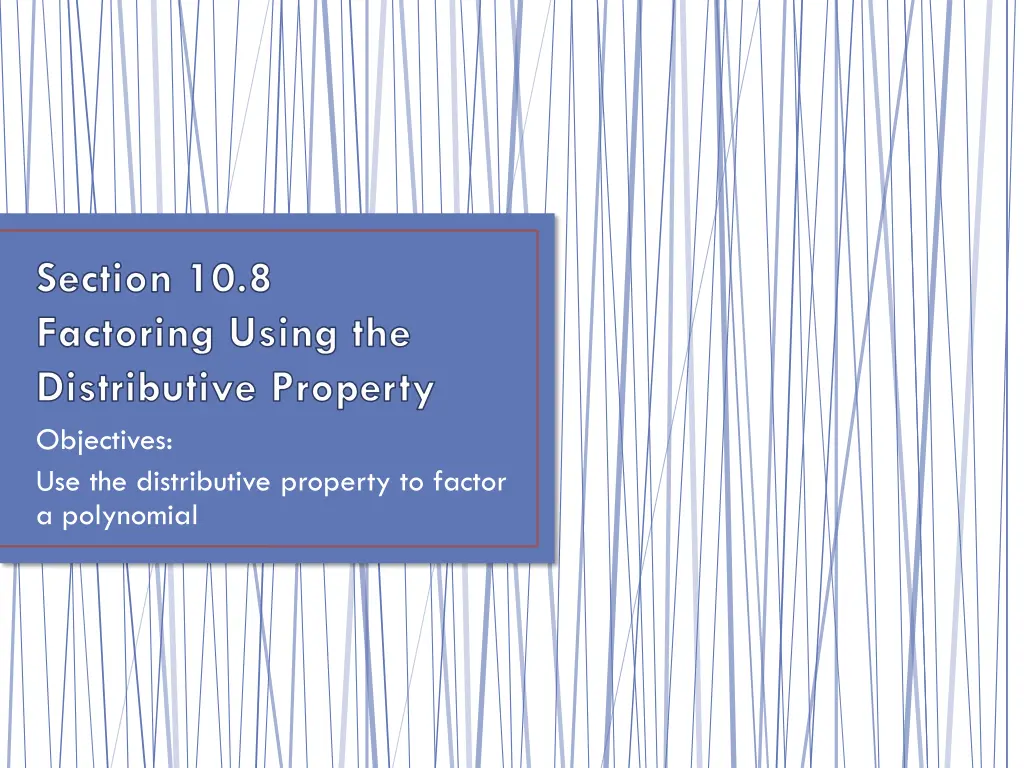
Polynomial Factoring Techniques
Learn how to factor polynomials using the distributive property, factor completely by finding the greatest common factor (GCF), factor by grouping, and solve equations involving factored expressions. Explore real-life situations where polynomial factoring is applied. Practice with worksheets and examples provided.
Download Presentation

Please find below an Image/Link to download the presentation.
The content on the website is provided AS IS for your information and personal use only. It may not be sold, licensed, or shared on other websites without obtaining consent from the author. If you encounter any issues during the download, it is possible that the publisher has removed the file from their server.
You are allowed to download the files provided on this website for personal or commercial use, subject to the condition that they are used lawfully. All files are the property of their respective owners.
The content on the website is provided AS IS for your information and personal use only. It may not be sold, licensed, or shared on other websites without obtaining consent from the author.
E N D
Presentation Transcript
Section 10.8 Factoring Using the Distributive Property Objectives: Use the distributive property to factor a polynomial
Factor a polynomial completely To write a polynomial as the product of: Monomial factors (GCF =Greatest Common Factor) Prime factors with at least two terms (two binomials or one polynomial) Prime polynomials cannot be factored
EX: Factor the expression completely 5 2 33 121 x x 1. 2. x 2 4 36 3. 4. 3 2 4 2 5 25 30 75 3 x x x x x
Factor by Grouping Factoring polynomials that have four terms. You group into two groups of terms and factoring the greatest common factor out of each term. EX: + + + 3 2 2 3 6 x x x
EX: Factor the expression completely 5. 6. + + + 3 2 3 2 4 6 24 7 7 84 x x x x x x 7. + 3 2 2 36 72 x x x
EX: Solve the equations = 3 16 100 0 x x 8. + = 3 2 2 10 8 0 x x x 9.
Real-life situation The width of a box is 2 inches less than its length. The height is 8 inches greater than the length. The box has a volume of 96 cubic inches. What are the dimensions of the box?
Factoring Using the Distributive Property WS 20 questions
